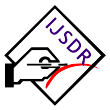Imp Links for Author
Imp Links for Reviewer
Research Area
Subscribe IJSDR
Visitor Counter
Copyright Infringement Claims
Indexing Partner
|
Published Paper Details
|
|
| Paper Title: | Millets as food and nutrition in the period of Climate Resilient Agriculture: A Review |
| Authors Name: | Atish Yadav , Divya Singh , Anil Kumar Singh |
| Unique Id: | IJSDR2210064 |
| Published In: | Volume 7 Issue 10, October-2022 |
| Abstract: | World is facing agrarian as well as nutritional challenges. Agricultural lands with irrigation facilities have been exploited to maximum, and hence we need to focus on dry lands to further increase grain production. Owing to low fertility, utilization of dry lands to produce sufficient quality grains is a big challenge. Millets as climate change compliant crops score highly over other grains like wheat and rice in terms of marginal growing conditions and high nutritional value. Sustainable food systems aim to provide sufficient and nutritious food, while maximizing climate resilience and minimizing resource demands as well as negative environmental impacts. We perform a series of optimizations to maximize nutrient production (i.e., protein and iron), minimize greenhouse gas (GHG) emissions and re-source use (i.e., water and energy), or maximize resilience to climate extremes. We find that increasing the area under coarse cereals (i.e., millets, sorghum) improves nutritional supply (on average, +1% to+5% protein and +5% to +49% iron), increases climate resilience (1% to 13% fewer calories lost during an extreme dry year), and reduces GHGs (−2% to −13%) and demand for irrigation water (−3%to −21%) and energy (−2% to −12%) while maintaining calorie production and cropped area. The extent of these benefits partly depends on the feasibility of switching cropped area from rice to coarse cereals. Millets are climate-resilient crops which are considered as a “Miracle grains adaptable to wide variety of ecological conditions requiring less water for irrigation with better growth and productivity in low nutrient soils. They require low artificial fertilizers application and show minimal vulnerability to environmental stresses. There is need to revive the importance of millet groups as health foods to enhance food and nutritional security and can help in alleviating malnutrition. Two main groups of millets are great millets (Sorghum and Pearl millet) and Small millets (Finger millet, Foxtail millet, Little millet, Proso millet, Barnyard millet, Kodo millet and Brown top millet) classified based on the grain size. Both great and small millets have traditionally been the main components of the food basket of the poor people in India. India stands first in area of millets with 90.94 lakh Hectare followed by Niger with 69.99 lakh Hectare. Millets area of the entire world accounts for 312.44 lakh Hectare. India also stands first in production of millets with 115.6 lakh tonnes followed by Niger with 37.9 lakh tonnes. Millets Production of the entire world accounts for 284.59 lakh tonnes. Uzbekistan stands first in yield of millets with 7563 kg per ha followed by Switzerland with 4236 kg per Hectare, yield of the entire world accounts for 910 kg per ha (Food and Agricultural Organization, 2017). Millets contain high amounts of proteins, fiber, niacin, thiamine and riboflavin, methionine, lecithin and little of vitamin E. They are rich in minerals like iron, magnesium, calcium and potassium also. Millets due to their nutritive value have potential health benefits to prevent cancers, decrease the occurrence of cardiovascular diseases, reduce tumor proliferation, lower blood pressure, risk of heart diseases, cholesterol content, rate of fat absorption, delayed gastric emptying and increased gastrointestinal bulk. Value-addition to millet grains as ready-to-eat and ready-to-cook items offers good opportunity to farmers for enhanced income generation, promotes production and marketing leading to nutritional security, employment and revenue generation. However, the successful harvest of small millets warrants integration of proven and climate-smart technologies for the fulfillment of the future needs of the ever-growing population. The review paper focused on all these aspects. Moreover, the research scope mentioned in the review paper implies future directions for enhancing millet-based agriculture viable in diversifying food baskets and achieving food and nutritional security in a hunger-free society. |
| Keywords: | Millets, Food security, Nutritional value |
| Cite Article: | "Millets as food and nutrition in the period of Climate Resilient Agriculture: A Review", International Journal of Science & Engineering Development Research (www.ijsdr.org), ISSN:2455-2631, Vol.7, Issue 10, page no.369 - 378, October-2022, Available :http://www.ijsdr.org/papers/IJSDR2210064.pdf |
| Downloads: | 000337070 |
| Publication Details: | Published Paper ID: IJSDR2210064 Registration ID:202068 Published In: Volume 7 Issue 10, October-2022 DOI (Digital Object Identifier): Page No: 369 - 378 Publisher: IJSDR | www.ijsdr.org ISSN Number: 2455-2631 |
|
Click Here to Download This Article |
|
| Article Preview | |
|
|
|
Major Indexing from www.ijsdr.org
| Google Scholar | ResearcherID Thomson Reuters | Mendeley : reference manager | Academia.edu |
| arXiv.org : cornell university library | Research Gate | CiteSeerX | DOAJ : Directory of Open Access Journals |
| DRJI | Index Copernicus International | Scribd | DocStoc |
Track Paper
Important Links
Conference Proposal
ISSN
 |
 |
DOI (A digital object identifier)
  Providing A digital object identifier by DOI How to GET DOI and Hard Copy Related |
Open Access License Policy
Social Media
Indexing Partner |
|||
| Copyright © 2024 - All Rights Reserved - IJSDR | |||






Facebook Twitter Instagram LinkedIn